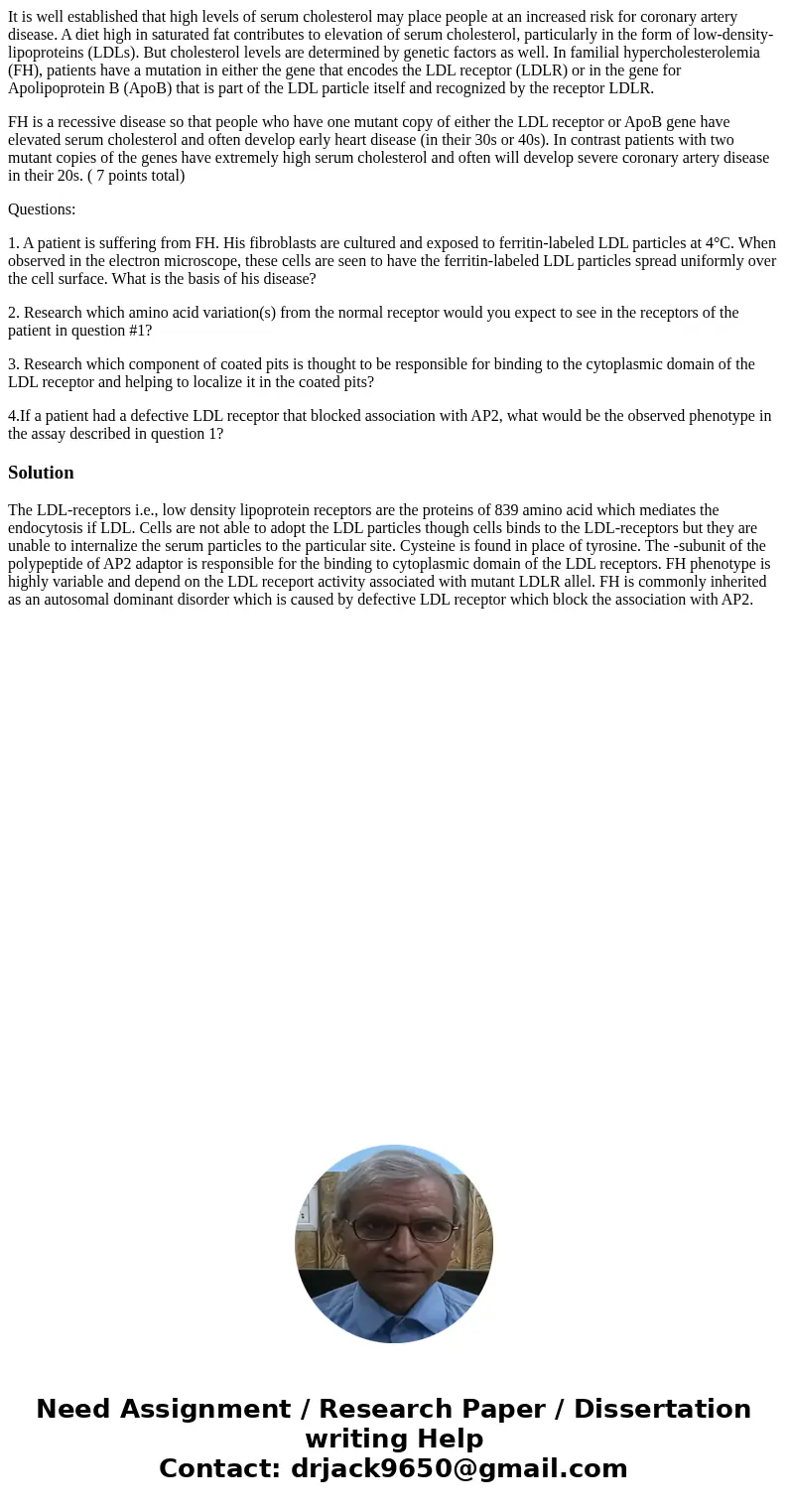It is well established that high levels of serum cholesterol
It is well established that high levels of serum cholesterol may place people at an increased risk for coronary artery disease. A diet high in saturated fat contributes to elevation of serum cholesterol, particularly in the form of low-density-lipoproteins (LDLs). But cholesterol levels are determined by genetic factors as well. In familial hypercholesterolemia (FH), patients have a mutation in either the gene that encodes the LDL receptor (LDLR) or in the gene for Apolipoprotein B (ApoB) that is part of the LDL particle itself and recognized by the receptor LDLR.
FH is a recessive disease so that people who have one mutant copy of either the LDL receptor or ApoB gene have elevated serum cholesterol and often develop early heart disease (in their 30s or 40s). In contrast patients with two mutant copies of the genes have extremely high serum cholesterol and often will develop severe coronary artery disease in their 20s. ( 7 points total)
Questions:
1. A patient is suffering from FH. His fibroblasts are cultured and exposed to ferritin-labeled LDL particles at 4°C. When observed in the electron microscope, these cells are seen to have the ferritin-labeled LDL particles spread uniformly over the cell surface. What is the basis of his disease?
2. Research which amino acid variation(s) from the normal receptor would you expect to see in the receptors of the patient in question #1?
3. Research which component of coated pits is thought to be responsible for binding to the cytoplasmic domain of the LDL receptor and helping to localize it in the coated pits?
4.If a patient had a defective LDL receptor that blocked association with AP2, what would be the observed phenotype in the assay described in question 1?
Solution
The LDL-receptors i.e., low density lipoprotein receptors are the proteins of 839 amino acid which mediates the endocytosis if LDL. Cells are not able to adopt the LDL particles though cells binds to the LDL-receptors but they are unable to internalize the serum particles to the particular site. Cysteine is found in place of tyrosine. The -subunit of the polypeptide of AP2 adaptor is responsible for the binding to cytoplasmic domain of the LDL receptors. FH phenotype is highly variable and depend on the LDL receport activity associated with mutant LDLR allel. FH is commonly inherited as an autosomal dominant disorder which is caused by defective LDL receptor which block the association with AP2.
 Homework Sourse
Homework Sourse